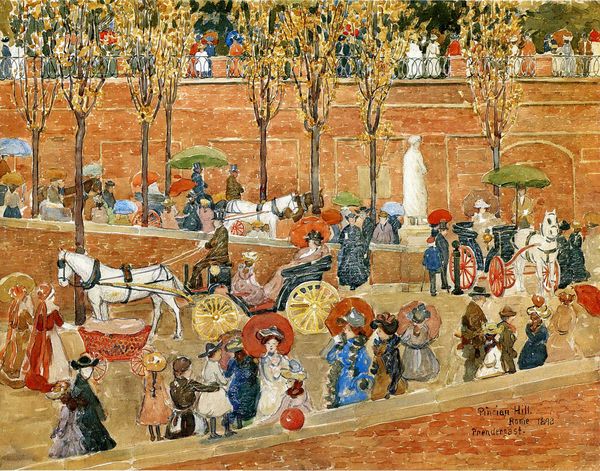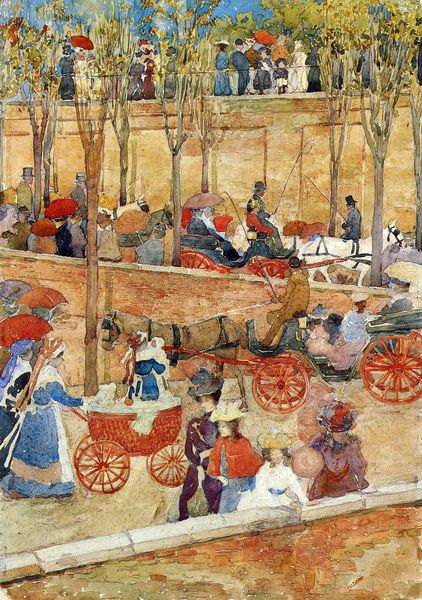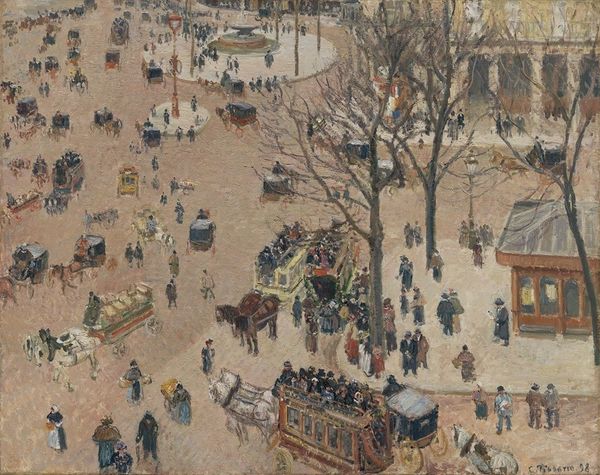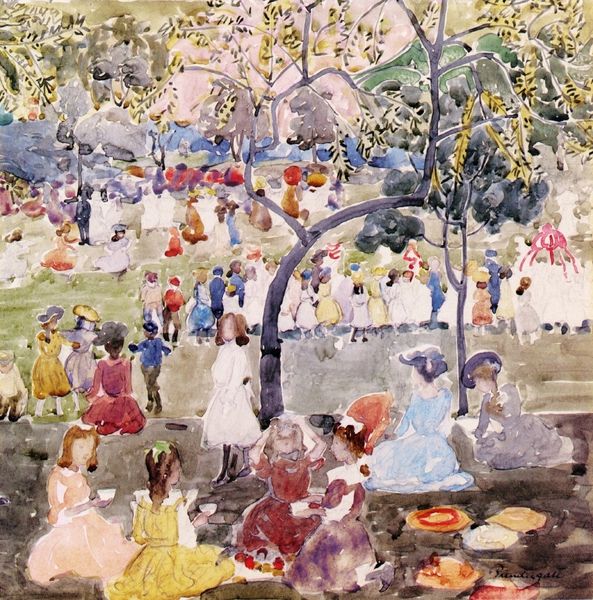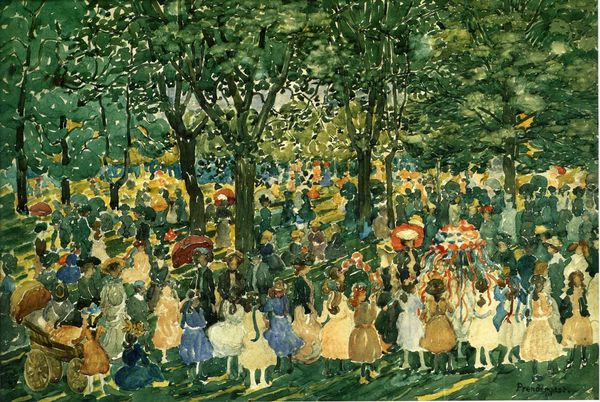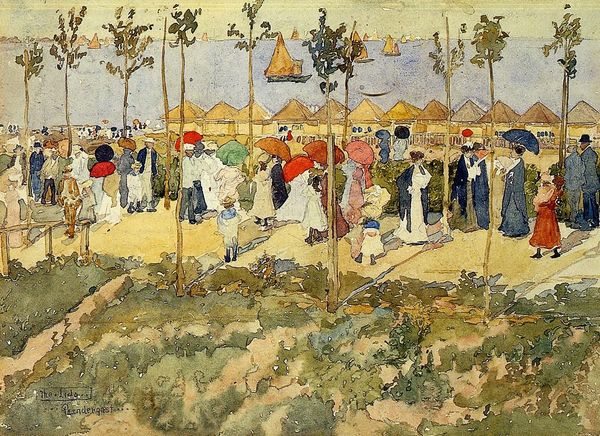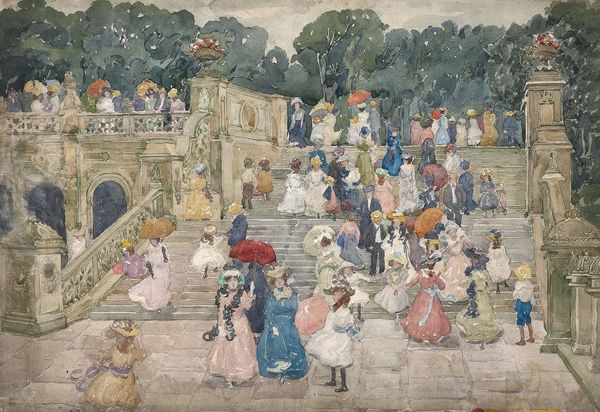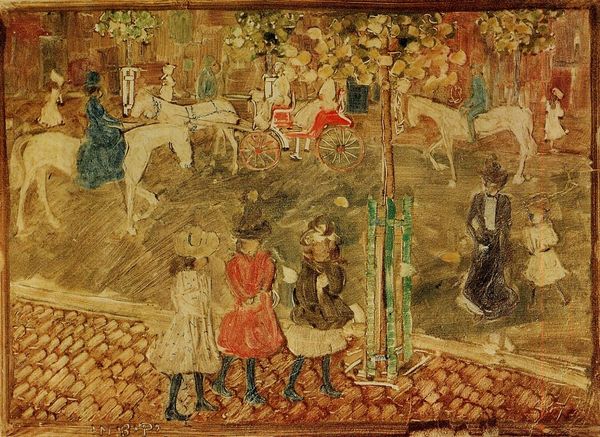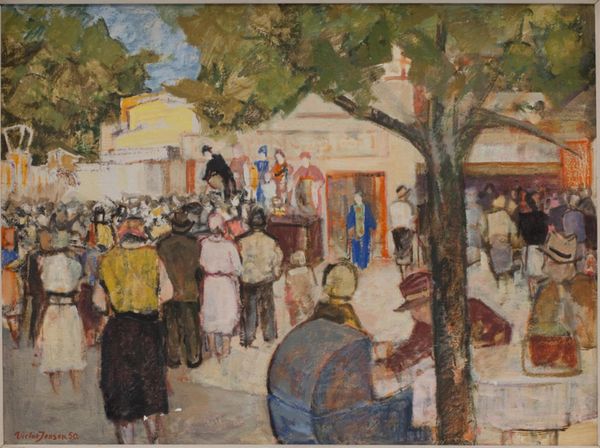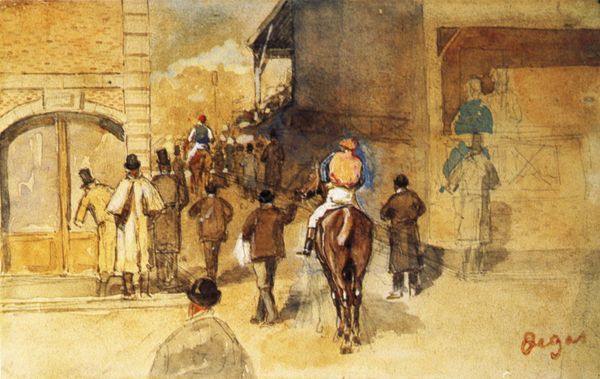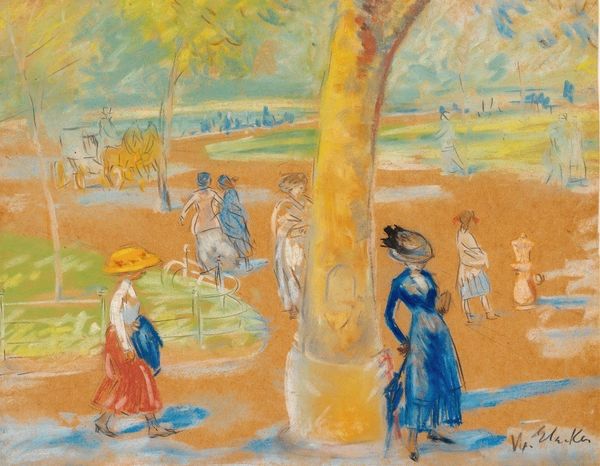
Copyright: Public domain
Curator: This watercolor by Maurice Prendergast, painted in 1899, captures Monte Pincio in Rome. It seems almost dreamlike, doesn't it? Editor: It does. My immediate impression is of a flurry of gentle activity, almost a hazy memory of a bustling park scene. The figures feel impressionistic, undefined. Curator: Prendergast was, indeed, a key figure in the American Impressionist movement. What's compelling here is how he renders public space and leisure through watercolor. Editor: Public space during a very specific social moment, too. We see figures dressed in a very particular way, the markers of class evident in the carriages and elaborate hats. It speaks to turn-of-the-century social rituals and performative displays of status, doesn't it? What was the artistic landscape that shaped Prendergast to work in this particular medium at the time? Curator: Well, consider that watercolor, often associated with plein-air painting, allowed artists to quickly capture fleeting moments. The late 19th century was fascinated with the depiction of modern life. The Impressionists aimed to capture transient effects of light and movement, but Prendergast also documents the leisure class as a specific socio-economic structure. Editor: Exactly, and I'm particularly drawn to the ambiguity of the figures. They exist as impressions rather than individual portraits. It raises questions of who is allowed to occupy and be represented in these spaces, highlighting potential social stratifications within even this seemingly carefree scene. Curator: The high vantage point flattens the scene somewhat, allowing us to observe the leisured class at a comfortable remove. There’s a very definite separation between observer and observed, almost as though we are enacting our own modern form of looking upon history through the visual language the artist employs. Editor: This image is powerful, both in its portrayal of history, as well as its invitation to consider our contemporary social landscapes. Curator: I agree. The past always informs the present. Editor: Food for thought.
Comments
No comments
Be the first to comment and join the conversation on the ultimate creative platform.
